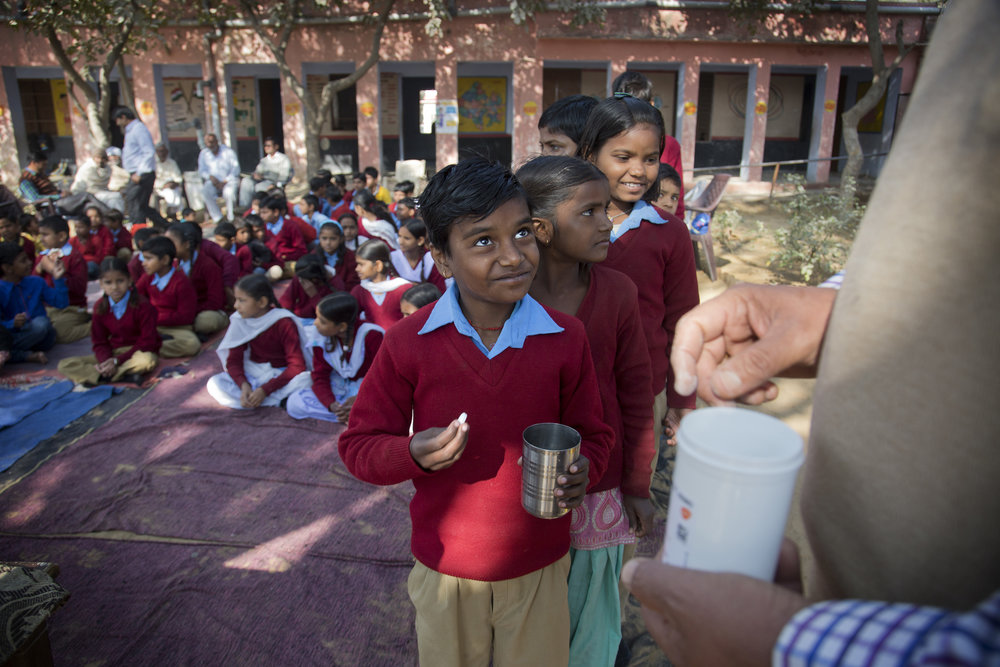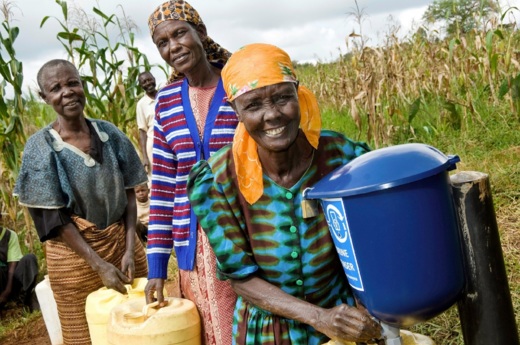
Turning Evidence into Action: It’s a process
By AdministratorBridging the gap between rigorously tested poverty interventions and programs that have an impact at scale seems like a straightforward concept. Once something is found to work, can’t you apply that same solution anywhere a particular problem is found? The answer is much more complex – turns out that in most cases, adaptations and permutations are required to ensure that the same result can be replicated. And in some cases, contexts are just too different – what worked in a small, controlled setting may yield very different results at scale, and at times with unintended consequences. It is this complexity that leads few organizations to consciously and intentionally attempt to bridge the gap.
At Evidence Action, we span the continuum from incubation of promising interventions through to scaled implementation. We partner with the researchers who developed the evidence for what works throughout the scale-up process, working to distill an intervention to the core components that result in the demonstrated impact. Our teams are skilled in implementation – we understand delivery systems and how to leverage existing infrastructure and partners to bring solutions to the people in need. By incorporating the whole process within Evidence Action, we accelerate the learning cycle and more cost-effectively alleviate the burden of poverty at a mass scale.
Evidence Action’s Beta incubator takes ideas that have proven successful in tightly controlled research environments and translates them into measurably impactful, cost-effective programs that can be delivered, at scale, in the ‘real world’. This scale up occurs through a rigorous process of designing, prototyping, testing, and finally delivering measurably impactful, cost-effective programs that are ready for implementation by Evidence Action and our partners. No Lean Season, our micro-financing intervention currently testing to scale in Bangladesh, is an example of a program in the final stages of Beta’s pipeline and was recognized by GiveWell in 2017 as a Top Charity.

The Beta process is key to ensuring program impact at scale, as we want to make certain that what works at the trial stage for a smaller population is still going to work at scale. The Beta team carefully analyzes the interventions at every step, examining along four key criteria to determine whether they should advance through the pipeline or be exited. We apply the criteria throughout our process, giving greater or lesser emphasis to certain criteria depending on what is appropriate at each phase. Our filtering criteria include:
-
Impact: We begin with ideas that are backed by research. As we use these ideas to build testable prototypes, we consider impact more comprehensively: does the initial impact registered in research hold in the real world? In a new context and over time? When implemented at scale: how does an idea impact economic markets (general equilibrium effects) or third parties (externalities) measure against its impact on beneficiaries?
-
Cost-effectiveness: We strive to find solutions that have the maximum impact for every dollar spent. Cost-effective programs have high value for money and are better than alternative solutions at achieving a measurable outcome. We use cost-effectiveness analysis to provide insight on the relative costs and effects of different interventions, which ultimately inform potential program impact. We also use cost-effectiveness analysis to provide general comparability of alternative interventions, and help inform priorities for resource allocation.
-
Scalability: We only invest in delivering services that have the potential to reach millions of people. Interventions that are intrinsically impossible to scale or that do meet a real need faced by millions of people do not make the cut. If, for any reason, we find we (or our implementing partners) cannot deliver a particular intervention at scale, we exit it from our pipeline.
-
Strategic fit: We recognize that some projects are better suited for our organization than others. We account for our strengths and limitations when deciding whether to pursue an idea, and we prioritize projects that align with our organizational strategy and infrastructural capacity, including those that have the potential to maximize the impact of our existing programs, or which leverage our existing program delivery platforms.
Our flagship programs illustrate the work we do once programs are fully scaled, including regular and robust monitoring and evaluation to ensure that intended impacts are achieved, and constant iteration to incrementally improve the program model and cost-effectiveness. Nor do we stop once programs exit the Beta pipeline–for example, each year our Deworm the World Initiative has grown exponentially, from reaching 35 million children in 2014 to over 280 million in 2017. The school-based deworming program partners with governments in India, Kenya, Nigeria, Ethiopia, and Vietnam to support delivery of regular deworming treatments to school-age and preschool-age children at risk of worm infection.

Our Dispensers for Safe Water program reaches around 4 million people across Kenya, Uganda, and Malawi, ensuring safe water access for families year round. The program installs chlorine dispensers near community water points, allowing families to add a pre-measured amount of chlorine into their water containers, keeping their water safe for 2-3 days. The program helps avert health impacts stemming from chronic diarrhea, cholera, and other waterborne diseases.
Organization-wide, we impacted over 285 million individuals in 2017. Our dispenser program has averted over 1.3 million cases of diarrhea in children under the age of five, and has prevented over 1,000 deaths of children in the same age group in Uganda. Our deworming program supported treatment of over 280 million children in 2017 at an incredible cost of less than $0.50 per treatment per child on average across all geographies.
Evidence Action’s key strength is in our ability to encompass the continuum from evidence to real, measurable impact. We work hard to identify promising interventions and work harder still to ensure those interventions can reach the hundreds of millions in need. With support from partners, funders, individual supporters, and a staff of over 300 operating in 10 countries, Evidence Action’s impact reaches worldwide.
Evidence Action is Foundation Beyond Belief's current Poverty and Health beneficiary. To be a donor to our Humanist Grants program, visit our website. You can be humanism at work.
